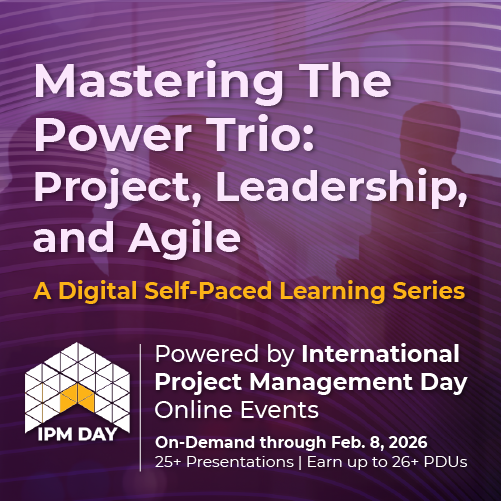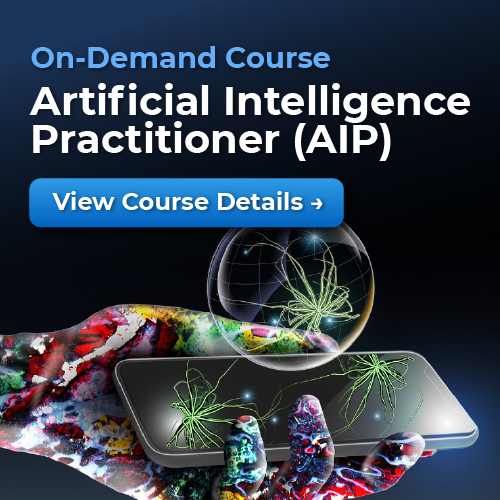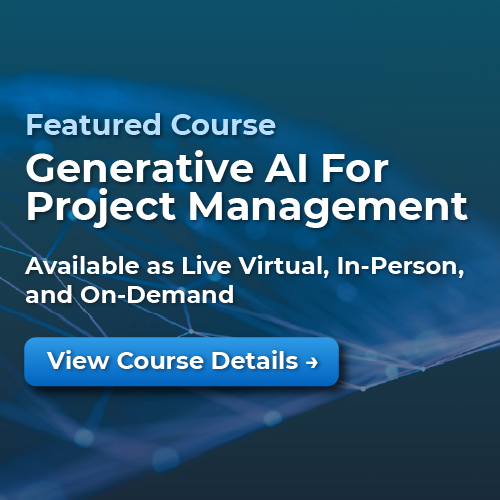By Markus Kopko
August 14, 2025
This series at a glance:
- The Shift Begins
- Strategic AI in Portfolio Management
- Operational AI in Portfolio Management – you are here
- Strategic AI in Program Management
- Operational AI in Program Management
- Strategic AI in Project Management
- Operational AI in Project Management
- Human Plus AI Partnership – Ethics, Maturity and Next Horizons
From Dashboards to Decision Loops – How AI Elevates Portfolio Execution
If strategic AI answers the question, “Are we doing the right things?”, then operational AI asks: “Are we doing them right—and fast enough to matter?”
The operational layer of portfolio management is where strategy collides with reality: resource bottlenecks, reporting delays, stakeholder blind spots. It’s where even the best-laid plans can lose momentum. And it’s where AI offers one of its most immediate, tangible contributions.
Let’s take a deeper look at how AI is transforming portfolio operations from static oversight into dynamic, intelligent adaptation.
Beyond the Beautiful Dashboard
Dashboards are everywhere. But how many of them actually help you make decisions? Most traditional portfolio dashboards show lagging indicators: burn rate, milestone status, RAG color codes. They’re snapshots of the past. Useful—but often too late.
Operational AI changes that by transforming dashboards into live decision support systems, in which:
- It ingests real-time data from delivery tools like Jira, MS Project, or ServiceNow
- It detects anomalies across the portfolio, such as underreported risks or systemic velocity drops
- It generates predictive insights, like when a benefit stream will be delayed due to cross-project dependencies, and increasingly
- It recommends interventions: reallocate budget, shift resources, or reprioritize deliverables.
Instead of asking PMs to feed the machine, the machine starts to feed the PMO—on time and in context.
The Shift to Responsive Systems
Let’s be clear: AI doesn’t eliminate the need for human oversight. But it shifts the focus from:
- Chasing updates → to validating insights
- Static status reports → to scenario evaluations
- Periodic checkpoints → to continuous feedback loops
This transition mirrors the evolution from waterfall to agile delivery. But AI adds a further leap: continuous sensing and autonomous signaling across the entire portfolio. For example, effort forecasting models can learn from past time entries across dozens of projects to predict future workload imbalances in shared resource pools. This is operational foresight—not reactive control.
🔧 Use Cases You Can Deploy Today
- Predictive Resource Bottleneck Detection By analyzing assignment trends, utilization patterns, and velocity changes across the portfolio, AI can highlight when your most critical experts are about to burn out—or when a shared team is underutilized.
- Intelligent Budget Monitoring AI can reconcile financial data across multiple initiatives and flag deviations not just when thresholds are crossed, but when early spending patterns suggest systemic overruns.
- Stakeholder Sentiment Analysis Machine learning tools can scan communications channels (with consent) across key programs to detect shifts in tone, concern escalation, or collaboration breakdowns that signal portfolio-level risks.
- Initiative Health Monitoring Rather than RAG colors based on individual project manager perception, AI combines multiple data inputs (financials, progress, risks, sentiment) to calculate a more objective, early-warning “health score” for every initiative.
The Human Role in the Loop
Operational AI is fast. But context is slow. That’s why portfolio leaders remain essential—not as data processors, but as interpreters, facilitators, and ethical stewards.
The human responsibility includes:
- Defining thresholds and priorities: What matters enough to trigger a recommendation?
- Contextualizing outputs: Not all risks are equal, and not all delays are fatal.
- Communicating insights: Explaining AI-generated decisions to stakeholders requires both confidence and clarity.
As with strategic AI, explainability is key. If your PMO uses AI to recommend defunding a major initiative, can you justify that call? Not just to finance—but to your CEO, your team, and your customers?
Pitfalls to Avoid
Let’s be honest: Not all AI deployments succeed. Watch out for:
- “Model-first” thinking: Don’t start with a shiny tool. Start with a clear decision-making bottleneck.
- Bad data: Incomplete, inconsistent, or siloed data will yield misleading insights—or worse, false confidence.
- Automation overreach: Let AI support decisions, not make them blindly. Always keep a human in the loop for critical choices.
Remember: Speed is nothing without direction.
Your 5-Minute Operational Friction Audit
You don’t need a massive AI team to get started. Instead, conduct this 5-minute friction audit to find your best starting point:
- Identify Friction: What is the one portfolio report that consumes the most manual effort each month?
- Find Blind Spots: Where was the biggest gap between a project’s status color and its actual health in the last quarter?
- Pinpoint Delays: Which critical portfolio decision regularly gets delayed because you are waiting for data?
The answers point directly to your highest-value starting points for operational AI.
Up Next: Strategic AI in Program Management: Building Outcome-Oriented Architectures
Coach, Speaker & Trusted Guide for Human-Centered PM Excellence
Markus Kopko is a seasoned expert in project, program, and portfolio management with over two decades of experience in shaping strategic transformation across industries. As Principal Consultant, founder of „MP4PM – Method Power for Project Management“ – (www.mp4pm.club ) – and content creator, he has supported countless professionals on their journey toward PMI certification (e.g. PMP, PgMP) and practical excellence in applying global standards (e.g. PMBoK Guide, ITIL etc.) in their daily work.
A trusted advisor and international speaker, Markus served on the PMI Review Team for the PMBOK® Guide – 7th Edition, contributes to the Core Development Team of the upcoming PMI Standard on AI in Project, Program, and Portfolio Management, and regularly publishes thought leadership content on integrating modern methodologies with real-world delivery.
Markus specializes in strategic program management, lifecycle governance, stakeholder alignment, and benefits realization. He is widely recognized for translating complex frameworks into actionable practices, helping organizations align execution with strategic intent – especially in AI-driven environments.
He holds certifications including PMP®, PgMP®, and is also a Certified AI Transformation Lead (C-AITL by USAII). Markus shares his expertise through global PMI communities, keynote contributions, and coaching – always with one core principle: Lead with empathy. Empower with trust. Show up human — every single day.“







